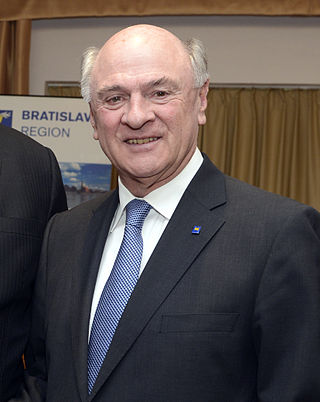Top Qs
Timeline
Chat
Perspective
2013 Lower Austrian state election
From Wikipedia, the free encyclopedia
Remove ads
The 2013 Lower Austrian state election was held on 3 March 2013 to elect the members of the Landtag of Lower Austria.
The Austrian People's Party (ÖVP) retained its majority. The main winner of the election was the new Team Stronach, which debuted at 9.8%. It drew votes from the ÖVP, Social Democratic Party of Austria (SPÖ) and Freedom Party of Austria (FPÖ).[1]
Remove ads
Background
The Lower Austrian constitution mandates that cabinet positions in the state government (state councillors, German: Landesräten) be allocated between parties proportionally in accordance with the share of votes won by each; this is known as Proporz. As such, the government is a perpetual coalition of all parties that qualify for at least one state councillor. After the 2008 election, the ÖVP had six councillors, the SPÖ two, and the FPÖ one.
Remove ads
Electoral system
The 56 seats of the Landtag of Lower Austria are elected via open list proportional representation in a two-step process. The seats are distributed between twenty multi-member constituencies. For parties to receive any representation in the Landtag, they must either win at least one seat in a constituency directly, or clear a 4 percent state-wide electoral threshold. Seats are distributed in constituencies according to the Hare quota, with any remaining seats allocated using the D'Hondt method at the state level, to ensure overall proportionality between a party's vote share and its share of seats.[2]
Remove ads
Contesting parties
Summarize
Perspective
The table below lists parties represented in the previous Landtag.
In addition to the parties already represented in the Landtag, five parties collected enough signatures to be placed on the ballot.[3]
- Team Stronach (FRANK)
- Communist Party of Austria (KPÖ) – on the ballot only in 19 constituencies
- The Brave Citizens (MUT) – on the ballot only in 13 constituencies
- Christian Party of Austria – Centre Party (CPÖMP) – on the ballot only in 4 constituencies
- Pirate Party of Austria (PIRAT) – on the ballot only in 1 constituency
Results
Summarize
Perspective
Results by constituency
Preference votes
Alongside votes for a party, voters were able to cast a preferential votes for a candidate on the party list. The ten candidates with the most preferential votes were as follows:[4]
Remove ads
Aftermath
The ÖVP retained its Landtag majority and six out of nine state councillors; the SPÖ also retained its two councillors. The FPÖ lost their sole state councillor to Team Stronach.
References
Wikiwand - on
Seamless Wikipedia browsing. On steroids.
Remove ads







